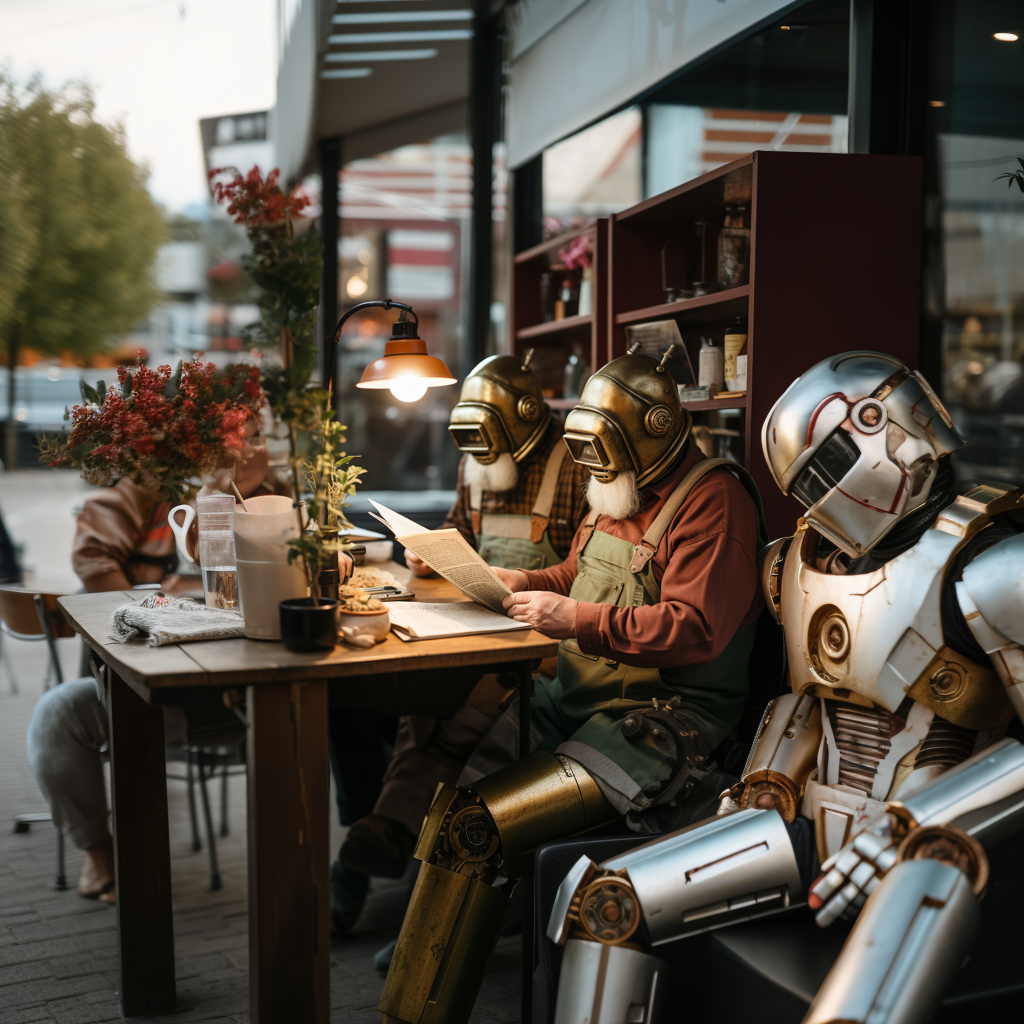8/18/2023 Last edited: 3/7/2025
The AI Gap
Dustin Schau
Product & Engineering Leader

There’s a thelogical perspective called “God of the gaps,” (see: Wikipedia) in which God is a placeholder for gaps in explanation, awareness, or lack of scientific knowledge. As scientific knowledge grows and more previously unexplainable phenomonon are explained, the gap of the shrinking power of God narrows. As an example, in ancient times weather was not understood. Thus, ancient civilizations believed that clearly, God must control the weather, and so we must pray to him/them/etc.
The field collectively known as Artificial Intelligence (hereafter I’ll use AI, even though the whole term is really a misnomer, but I digress) reminds me of this concept. Whole industries may shrink with the advent of AI, but it’s unclear how much this gap will narrow, whether it will someday narrow to zero, or whether like the God of the Gaps, if there is still a sufficient gap in the middle for the human experience and entire industries to exist alongside AI.
As I quite like using concrete examples as demonstrations, I’ll use my recent experience in writing a children’s novel for my son, Noah, to weave through where this gap exists in various industries and the current friction that exists in AI.
The project
After seeing the below tweet from Chase Lean (follow him, he’s excellent and educational!)
How to make pictures for children's coloring books with Midjourney
— Chase Lean (@chaseleantj) August 2, 2023
Use this prompt:
kid's coloring book, [OBJECT], cartoon, thick lines, black and white, white background
You can even control the maturity level of the drawing, from simple to complex.
Steps below ↓ pic.twitter.com/XTTYzJvY98
The gap, today
So, let’s break down this gap. This gap: human industries, but I’ll focus on industries that I know best, specifically Product, Engineering, and Design. I’ll start with an oft-repeated phrase that I generally believe to be true at this point:
AI won’t replace your job, but someone using AI will.
Loosely phrased, the gap is whether an industry still needs to exist at all. Currently: yes, very much so! While the usage of AI has begun to shape and transform industries, whole professions have seemingly not disappaered overnight, however professionals in these industries have begun to use these tools to become more efficient and effective in their day-to-day. I’ll give a few examples.
Engineering
Tools like GitHub Copilot and ChatGPT have exploded in usage as engineers have recognized that a lot of what they do day-to-day are somewhat mundane tasks that can be learned and automated. Of course, knowing how to prompt an AI has created a whole field of engineering called “Prompt Engineering,” in which engineers prompt the AI to craft a solution with deepening understanding of the problem.

Right now, the field of Engineering’s gap is that the AI needs prompting. Human understanding of higher-order concepts, of how systems of knowledge and processes work together, and so forth still needs to exist with the current states of AI. There’s friction, and a lack of ability of the current tooling to gain sufficient domain knowledge and understanding to replace the field of Engineering.
Will that be true forever? Are there areas of engineering that perhaps are less “safe” than others?
Product
I’ll use Product here loosely to mean: idea generation, strategy, and writing. If Engineering is a bit more science than art, Product is a bit more art than science and so AI is a tool used to augment and inspire creativity to help this industry be more effective and efficient. To use a metaphor from a friend, if we think of software is a canvas, Product oftentimes fills in the blanks and anything that remains uncovered. This could be: talking to customers to develop conviction in the problem(s), analyzing data to understand friction or themes to explore further, or simply writing documents to help everyone align around what we’re doing and why we’re doing it.
I believe the most transformative tool that we’ve seen for AI augmenting Product is ChatGPT. If we use Product even more loosely, then other tools like logo generation, specific tools for copywriting or ideating on strategy, and so forth have also begun to emerge but ChatGPT seems to be the most generally useful AI tool today that has the ability to narrow the gap for Product.